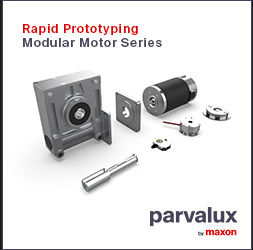Service buses and their impact on digitalization

One of the biggest challenges that enterprises face in their digitalization efforts is having too many complex data silos and applications that don't follow a common architecture. The promises of the Fourth Industrial Revolution are significant, but there are several traps that companies need to avoid in order secure the long-term outcome of their digitalization projects. The answer lies in a flexible, future-proofed data architecture, as Martin Thunman, CEO and co-founder at edge analytics platform Crosser, explains.
IDC reports that 60 per cent of executives believe the Internet of Things (IoT) will play a critical role in their digital business strategy — with big data and analytics among the top technologies already implemented to support this. However, the communication layer of yesterday has evolved and has now become even more intelligent. Therefore, industry now needs to add intelligent logic between data endpoints to enable IoT applications.
Architectural development
The core concept of the enterprise service bus (ESB) architecture is that it enables easy integration of multiple applications by putting a communication bus between them. This is crucial in increasing organizational agility by reducing time to market, making it one of the key reasons that companies implement an ESB as the backbone of their IT infrastructure. This is down to an ESB architecture providing a simple, well defined, "pluggable" system that is highly scalable.
From the ESB followed the need of an event driven architecture (EDA) to leverage insights when they occur. This formed the need for initial steps toward the integration of large enterprise systems, such as enterprise resource planning (ERP) and customer relationship management (CRM).
ESB is regarded as the most promising strategy for integrating business applications across distributed and diverse frameworks and platforms today. Using ESB as a middleware layer creates a superset of both service oriented architecture (SOA) and EDA. As a result, ESB provides support for transforming messages, live streaming data, smart routing, as well as protocol transformation.
Service bus layers
The promise of Industry 4.0 sets new expectations for traditional service bus architecture. This means the service bus now needs more functionality than ever before. There is now the need for an intelligent integration layer that not only moves messages between endpoints, but can run real-time applications and workflows with full data analytics capabilities included. This means that the service bus of tomorrow needs to be adopted in all three major communication layers; the traditional ESB, a Cloud-based service bus and the manufacturing service bus (MSB).
A cloud-based service bus is built for messaging-as-a-service and is typically used for integrating microservices and cloud applications. On the other hand, the MSB is a new concept for describing the need for a communication and abstraction layer on the factory floor. It’s ideal for integrating various machines, sensors, systems and services on the factory site. MSB can be compared to an intelligent edge layer — providing advanced analytics, machine learning, common data models and other necessary features to enable machine data for the rest of the network.
A smarter future
The rise of Industry 4.0 is igniting change across industry, both technically and organizationally, resulting in new requirements on all data layers. Firstly, connected machines require data in milliseconds, driving the need for real-time, event-driven communication. Secondly, acting reactively is moving towards being more predictive, creating a need for machine learning (ML) abilities within both the MSB and the ESB layers. Lastly, there is the need for a common data model or a unified namespace to enable data comparison and usage of all asset data.
Crosser’s edge platform is purpose built to meet the needs of data-drive facilities, by offering Cloud-based innovation, management and orchestration of all Industry 4.0 use cases. Its unique hybrid-first ability is the only solution on the market that can run in the Cloud, on-premise and at the edge with the same software. Crosser is able to cover all three integration layers with the same platform and supports real-time integrations for machine-to-machine communication, reducing silo complexity and supporting simpler digitalization.
As manufacturers continue to digitalise, it’s vital they have access to architecture that can handle their demands. Service buses provide crucial layers of communication that enable streamlined operations. But investing in an intelligent architecture that provides functionality across all layers of an enterprise will be a crucial step in taking data-driven ambitions into reality.
For more information about Crosser’s platform, visit crosser.io
About Crosser Technologies
Crosser is a Swedish software company with installations in over 20 different countries. We design and develop a Low-Code software platform for Streaming Analytics, Automation and Integration for any Edge, On-premise or Cloud. The Crosser Platform enables real-time processing of streaming, event-driven or batch data for Industrial IoT and Intelligent Workflows. It is the only platform of its kind that is purpose-built for Industrial and Asset Rich organizations.
The solution is built to fight complexity with simplicity through the Crosser Flow Studio, the visual design tool that enables teams to innovate faster than ever without developers. The software is ideally suited for Enterprise customers of various industries and applications, including Edge Analytics, Industrial Connectivity, Industry 4.0, Streaming Analytics, Hybrid Integration and Intelligent Workflows.
Industrial customers include, SCA AB, Valmet Corporation, Gebhardt, Clarebout Potatoes and RubbleMaster.
Crosser was included in the “Cool Vendors in IoT Edge Computing, 2018” report by Gartner, Inc. and was named among the Top 10 Smart Factory Solutions in Europe 2020 by the industry magazine Manufacturing Technology Insights.
Comments (0)
This post does not have any comments. Be the first to leave a comment below.
Featured Product

